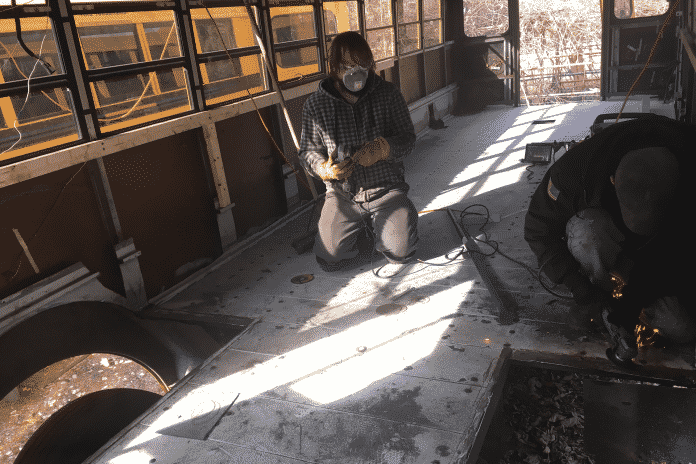Since we ended up in a 27′ bus, we need to maximize our storage space. This means that every nook and cranny needs to be utilized. To be honest, we would have probably done this if we ended up with a 40′ bus too. The bus does not have rear wheel wells because of the bus being handicap accessible, but the front wheel wells were taking up a tremendous amount of space. About the equivalent to a 60 quart tote on each side of the bus.
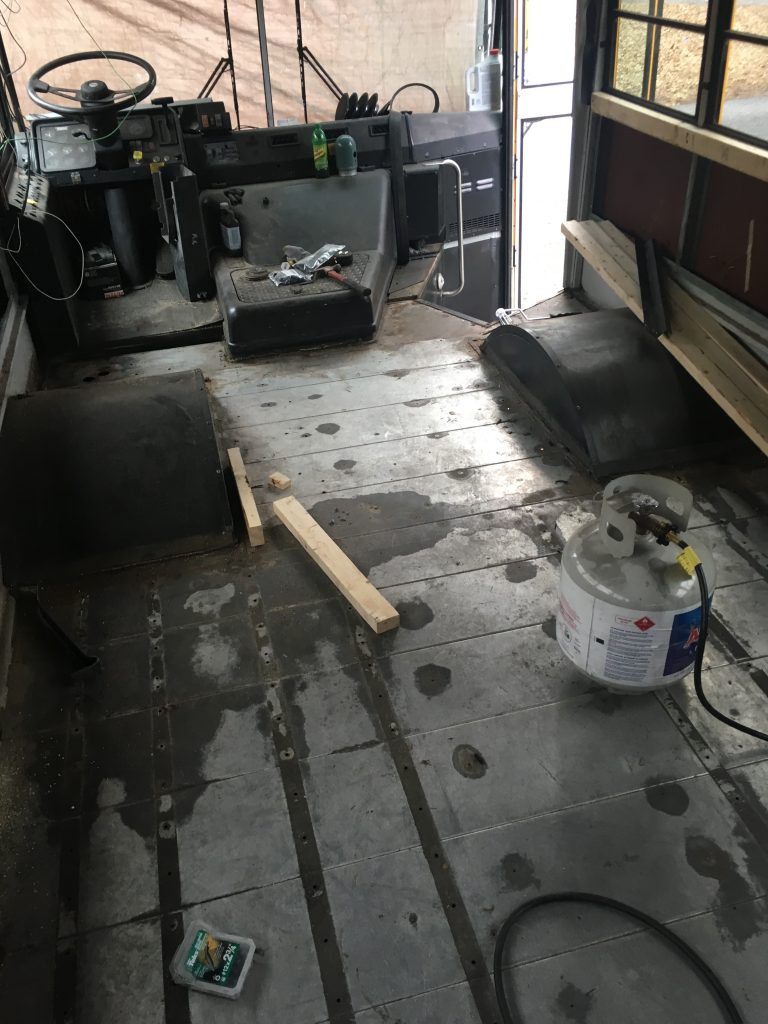
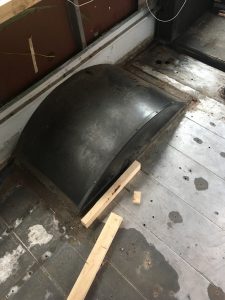
cut them out they said, it will be fun they said.
After some research and 271 measurements, we felt confident in cutting out the wheel wells without any repercussions. We got a lot of negative feedback about doing so for fear the wheels would blow up through the floors and seriously injure someone, but this is not the case. It may not work to cut the wheel wells out of your bus and in fact, we even recommend that you do not do so for fear of injury.
- Our bus has a GVWR of 30,000lbs
- We (obviously) removed all of the extremely heavy seats (we had track seating)
- There is a bump stop that sits 3″ off of the leaf springs.
- There is still 7″ of clearance if the bump stop maxes out.
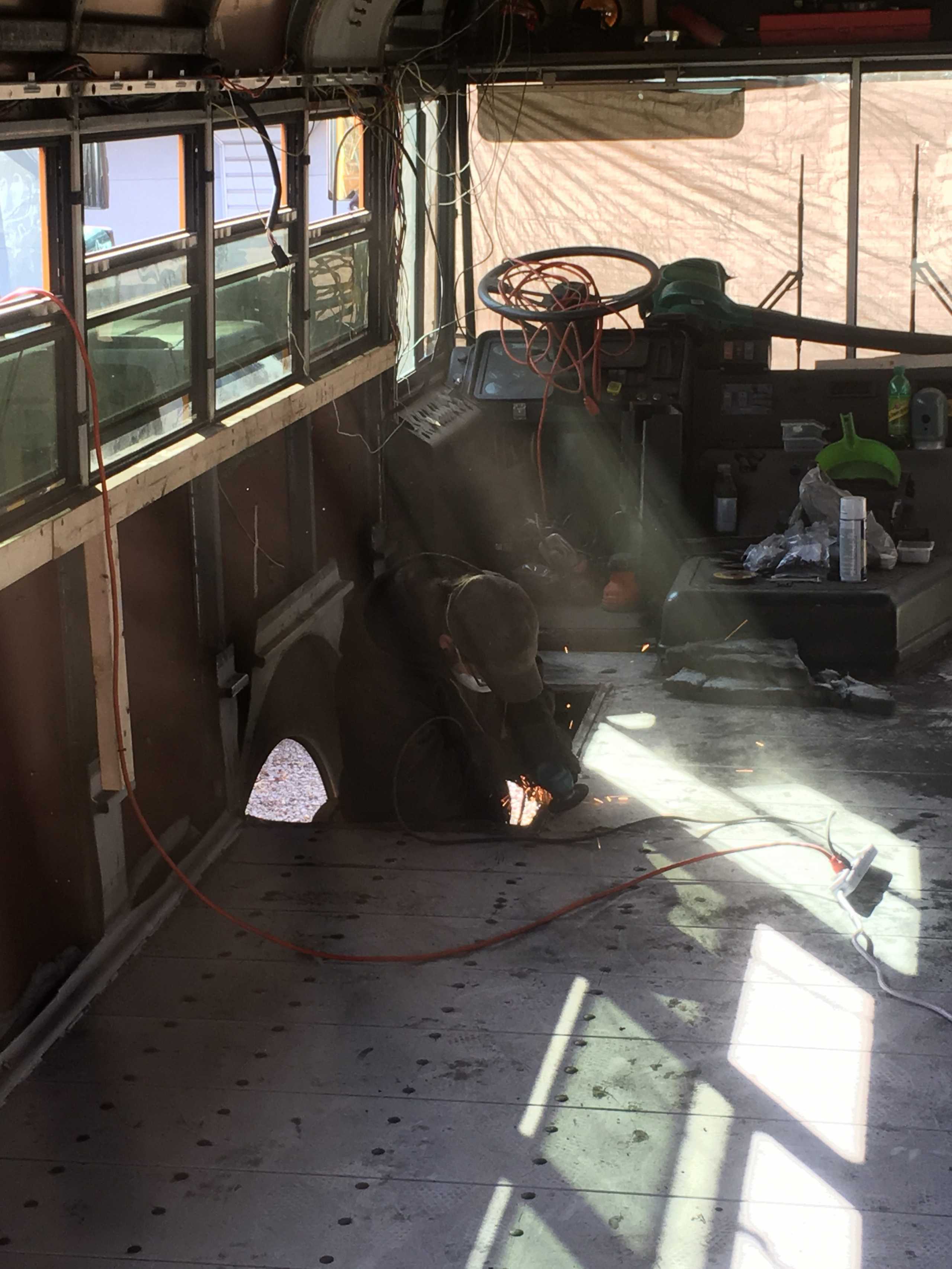
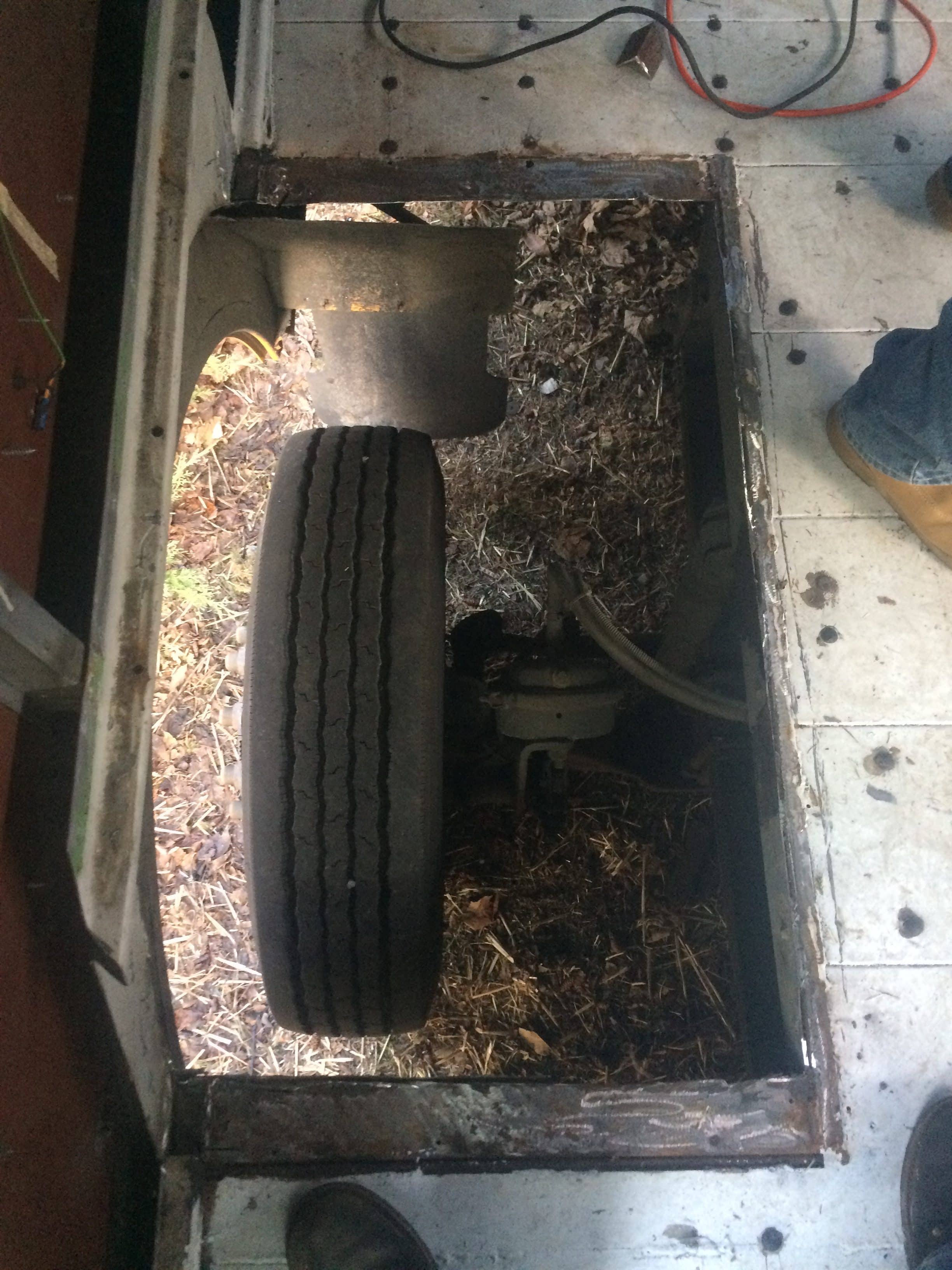
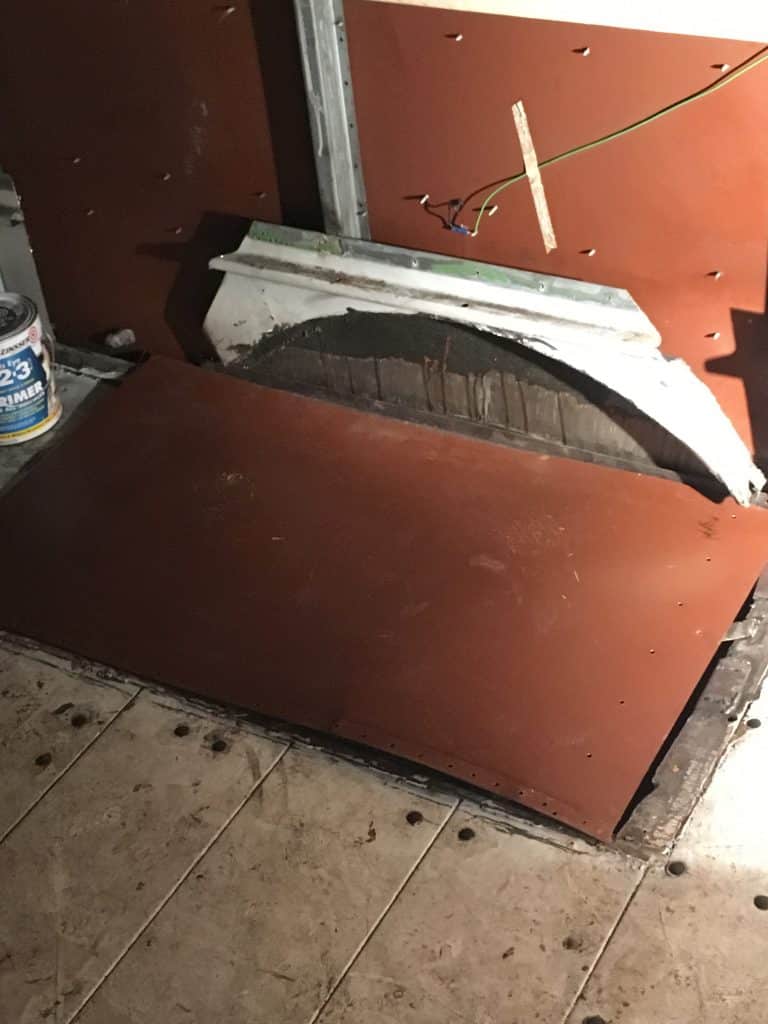
After making a quick trip to Lowes, the edges were sealed up with weatherproof caulking as well as roofing tar. We also painted the steel on the underside and sealed them using the same technique to ensure a long waterproof life.
[amazon_link asins=’B0014WRGUU,B003NFKYLE,B00RZV20CS,B006NKRYHS,B0010DHFTK,B00RVZ7DNO’ template=’ProductCarouselCustom’ store=’sasquatters-20′ marketplace=’US’ link_id=’497c8e06-2eb4-11e7-98f5-c54fd591e017′]
